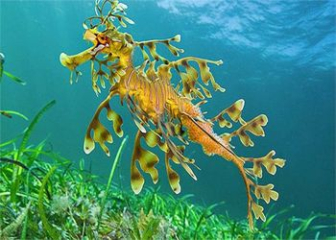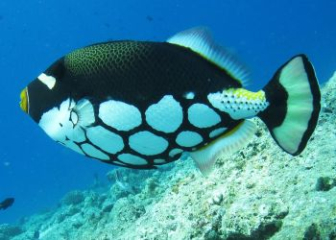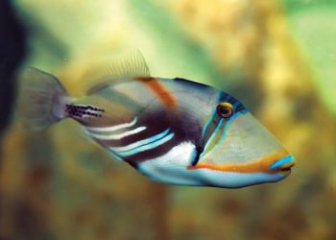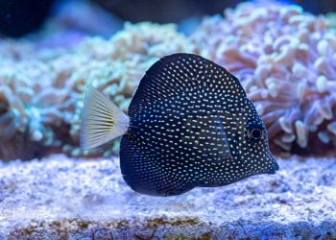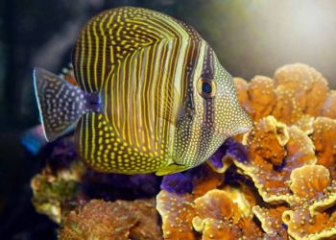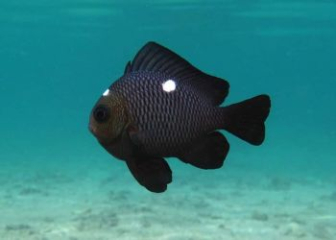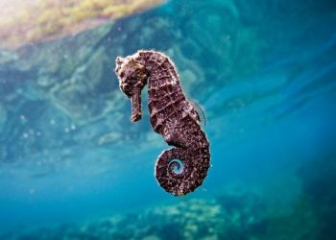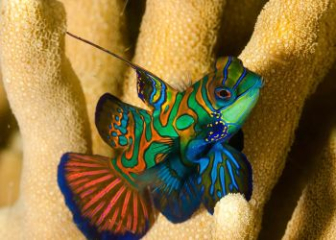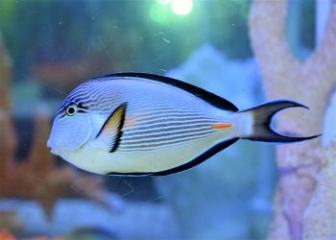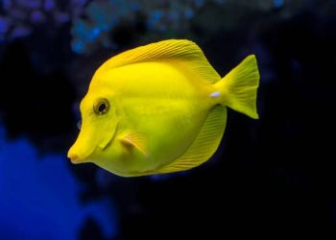Purple Tang - Characteristics, detailed care
Blog | by
Purple Tang, a marine aquarium fish from the Red Sea, a member of the surgeonfish family, has a unique bluish-purple coloration and a bright yellow tail.
The Purple Tang (Zebrasoma xanthurum), a strikingly colored saltwater fish, is the most popular member of the Tang family. With its vibrant deep blue-purple color and lemon-yellow tail, this fish is a perfect addition to your saltwater aquarium.
In today's article, let's learn more about the Purple Tang fish to see where it comes from, what its habits are, and whether it is suitable for beginners in aquarium nice fish keeping!
Information about Purple Tang :
| Scientific name |
Zebrasoma xanthurum |
| Common name | Purple Tang, Purple Surgeonfish |
| Class | Actinopterygii - Ray-finned fishes |
| Set | Acanthuriformes |
| Surname | Acanthuridae - Surgeonfish |
| Spend | Zebrasoma |
| Species | Z. xanthurum |
| Source | Red Sea |
| Lifespan |
In the wild: 35 - 40 years In captivity: 7 - 10 years |
| Size | 20 - 23 cm |
Origin of Purple Tang
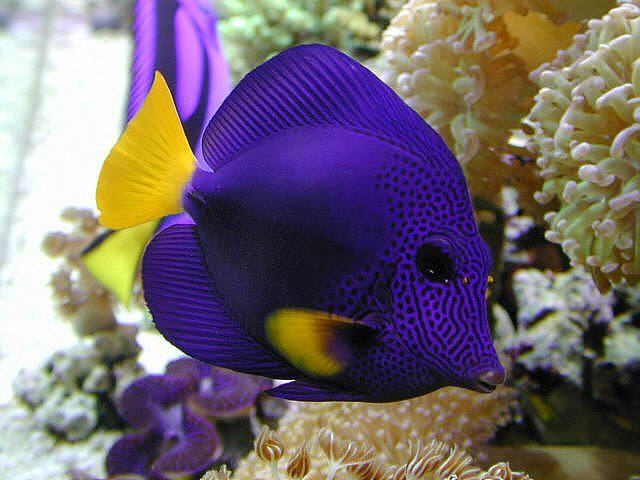
Purple Tang fish is also known as purple surgeonfish.
Purple Tang, also known as Purple Tang, English name is Purple Tang, scientific name is Zebrasoma xanthurum, is a marine ornamental fish with the most common origin and natural distribution in the Red Sea, in addition, they are also distributed in some of the following sea areas:
- Seas around the Arabian Peninsula such as: Yemen, Oman, Saudi Arabia,...
- Northwest Indian Ocean such as: Eritrea, Somalia, Gulf of Aden....
In the natural environment, they often live in coastal coral reefs at a depth of only 1 - 30 meters, where the water is warm, rich in light, with lots of seaweed, and many crevices and cracks to hide in.
The fish was first scientifically described in 1852 by zoologist Edward Blyth. The name "xanthurum" comes from the Greek words "Xanthos - yellow" and "oura - tail", referring to the fish's striking yellow tail.
Purple Tang Appearance

Impressive appearance of a purple surgeonfish.
The Purple Tang has a very vibrant and striking appearance with a deep purple-blue color and a bright yellow tail. Let's learn more about the appearance of this fish.
- Size : 20 - 23 cm in adult fish.
- Shape : Flat oval, tall, pointed snout, big eyes similar to other surgeonfish species, juveniles have the same shape as adults but are lighter in color and have shorter fins.
- Color : The whole body is dark purple-blue, with a blue sheen. The fish's body has additional wave-shaped or spotted patterns. The fish's tail is bright yellow. The dorsal and ventral fins are the same color as the body, slightly rounded.
- Spiny tail : The purple tang has a sharp, pointed tail spine on both sides of the tail base, which is both a weapon and a characteristic of the spiny tail fish family.
Purple Tang Behavior
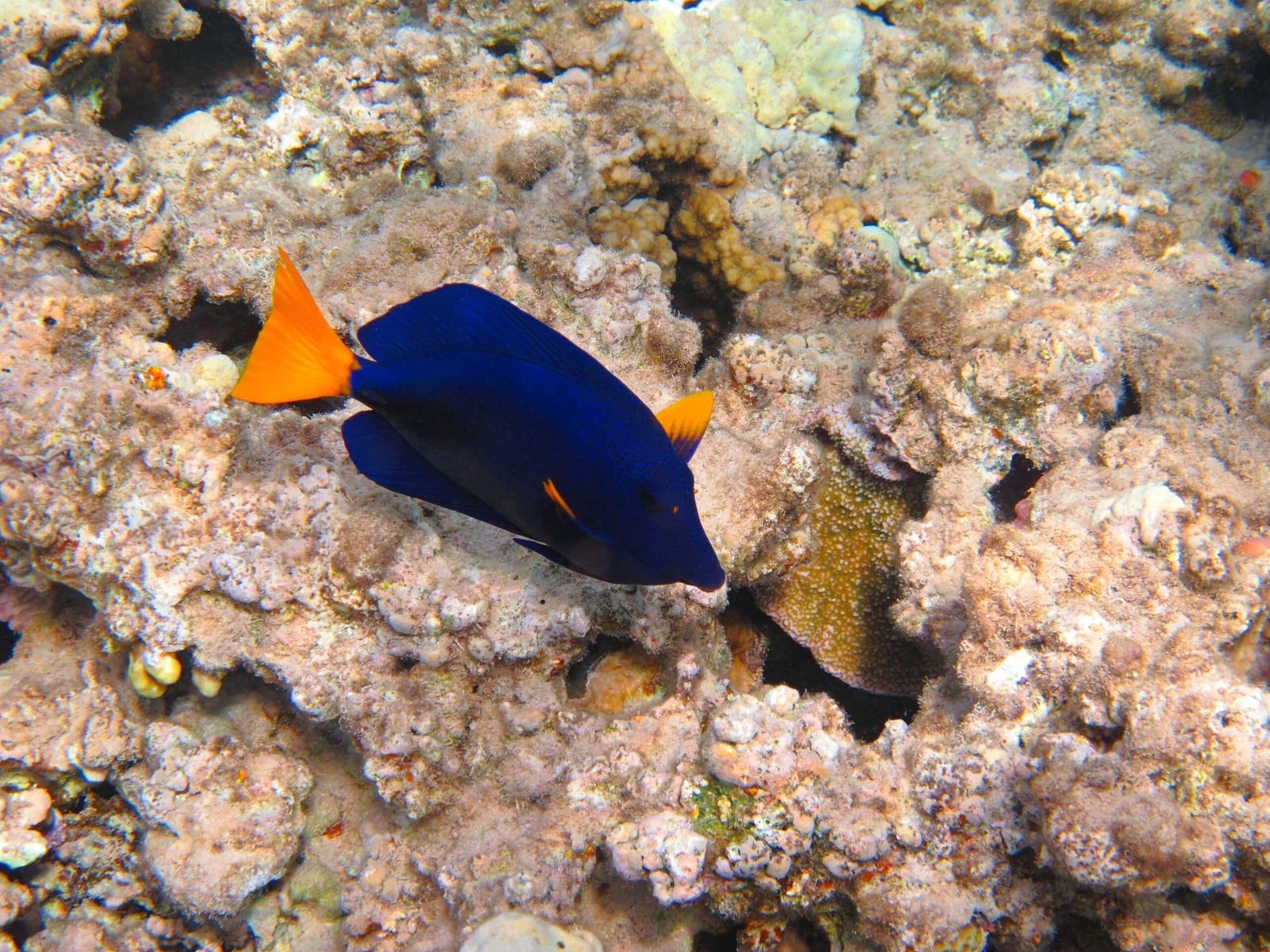
A purple tang forages in its territory.
Let's learn in detail about the interesting habits of the purple surgeonfish to see if it is different from other surgeonfish species.
Aggressive, highly territorial
Purple tangs are very territorial, especially when they are used to a new environment, they will immediately define an area of their own. This fish is also very aggressive with other tangs, especially those of similar size such as yellow tangs , striped tangs,...
Forages only within a certain territory
Purple Tangs usually like to graze on algae on coral reefs and rock surfaces, living in a certain, familiar area. They rarely go out into the territory of other fish to forage.
Active during the day, rest at night
Purple surgeonfish are very active, during the day they will swim around the tank to gnaw on rocks and look for food. However, at night, they will find a hiding place to rest and even sleep.
Adaptable
The Purple Tang is a marine aquarium fish that is quite easy to adapt to an artificial aquarium environment. However, it will need a period of adaptation, usually lasting from a few days to a few weeks, before it can swim confidently in a new tank.
Guide to raising Purple Tang fish from A to Z
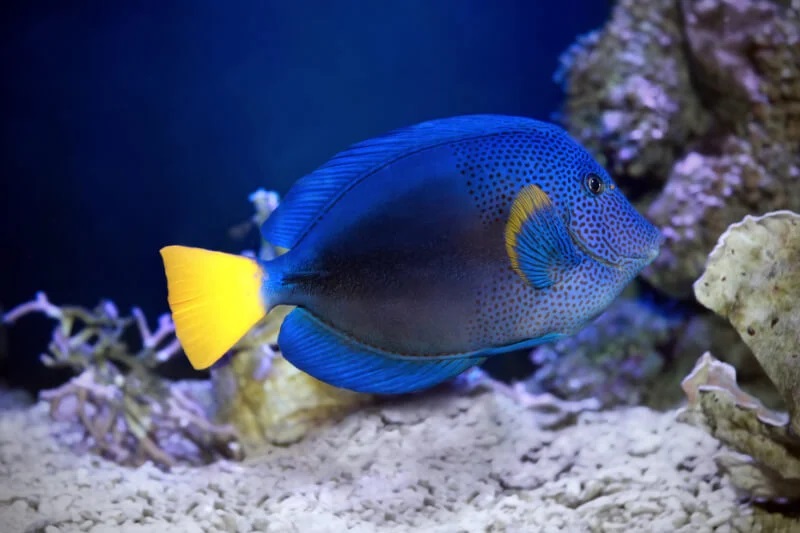
Purple Tang fish like to nibble on algae clinging to live rocks and corals.
Purple surgeonfish are loved by many marine aquarium hobbyists because of their beautiful colors and are quite easy to raise. However, if you want this fish to grow well, have beautiful colors, and have few diseases, please refer to the following instructions!
The most suitable tank design for raising Purple Tang
Purple tangs are highly territorial, so tank design is an extremely important factor in helping the fish adapt to an artificial captive environment. A suitable aquarium for keeping purple tangs needs to meet the following basic requirements:
- Tank size : Minimum capacity 350 - 400 liters for 1 adult fish, ideal 500 - 600 liters, length from 1m2 or more, tank should focus on width, limit square tanks or tanks that are too deep.
- Aquarium decoration : Arrange lots of live rocks to create caves, holes, and crevices for fish to hide in. Prioritize fish with lots of natural algae so they can "nibble" freely.
- Filtration system : Need overflow filter + external filter or bottom filter, skimmer to remove organic debris, wave generator to create flow similar to the natural environment of fish.
- LED lighting system : Use the blue-white light type commonly used in marine aquariums. If you also raise corals, you need to use specialized lights to help the corals photosynthesize.
- Other accessories : Can be equipped with additional heaters, coolers, water test kits or salinity meters to help keep the water environment stable.
Water parameters suitable for Purple Tang
In addition to designing a suitable tank, you need to pay attention to the water parameters in the tank, this is the leading factor that directly determines whether the fish can grow well and live long or not. Here are the important water indicators that you need to pay attention to:
- Temperature : 24 - 27 degrees Celsius.
- Salinity : 1.023 - 1.025 SG.
- pH: 8.1 - 8.4
- Ammonia, nitrite : Not allowed
- Calcium : 380 - 450 ppm if the tank has corals.
- Dissolved oxygen : > 6mg/l
What do Purple Tangs eat?
Purple tang is a fish that tends to eat plants, especially algae. However, if you want the fish to grow well, be healthy, and have the most beautiful colors, you need to provide a complete diet with the following foods:
- Seaweed (Nori) : Favorite food, choose dried seaweed specifically for algae-eating fish, cut into small pieces, attach to a clip so the fish can nibble all day.
- Industrial food : Pellet type, leaves with lots of spirulina, fiber, product specifically for herbivorous fish.
- Boiled vegetables : Spinach, pumpkin,... add vitamins and minerals.
- Additional food : Occasionally feed fish with chopped peeled shrimp and artemia to give the fish beautiful color.
Types of fish that should and should not be kept with Purple Tang fish
Because purple surgeonfish are highly territorial, when you want to keep them in a community tank, you must be careful to choose suitable fish species and avoid aggressive fish species, specifically as follows:
Fish should be kept together :
- Marine aquarium fish are small and gentle like Nemo fish (clown fish), clownfish...
- Corals Because this fish is safe for corals.
Fish should not be kept together :
- Other species of spinyfish such as yellow spinyfish, green spinyfish ( green spinyfish ),...
- Aggressive fish such as triggerfish, lionfish,...
Notes when raising Purple Tang fish
When raising purple surgeonfish, you need to note the following:
- Fish should be added last if you are keeping different types of surgeonfish to avoid territorial competition.
- Observe fish carefully when first released into the tank to see any unusual signs and handle them promptly.
- Should add garlic and vitamins in food to increase fish immune system.
Common diseases in purple tang fish and how to treat them
Although purple tangs are normally very resilient, if the water conditions are unstable or the care regimen is not appropriate, this fish is susceptible to some health problems. Below are common diseases in purple tangs and how to treat them. Let's learn more!
| Disease name | Reason | Symptom | Treatment |
| Fin rot |
Bacteria Due to long-term water pollution |
Fin edges are torn, frayed, fins turn opaque white or black |
Isolate sick fish. Change water and clean the aquarium. Use antibiotics such as Kabamycin, Maracyn. Supplement vitamin C in fish food. |
| Skin fungus |
Caused by the parasite Amyloodinium ocellatum causing skin fungus in fish. Due to dirty water |
The fish skin becomes translucent, covered with a layer of golden dust. Fish are lethargic, breathing heavily, not eating... |
Isolate sick fish in separate tanks. Use copper based medicine Turn off the lights in the tank to reduce parasite growth. |
| White spot |
Caused by the parasite Cryptocaryon irritans. Due to unsafe water environment. Fish are stressed Newly purchased fish have not been quarantined before being released into the tank. |
Fish appear tiny white spots like salt. Fish itch, scratch, rub against rocks, decorations. Fish stop eating, lethargic, lazy to swim |
Isolate sick fish. Use fish ich medications containing copper or formalin. Increase temperature slightly to sterilize. Change water, clean fish tank. Bathe fish with diluted salt. |
Purple Tang Price
Currently, in the ornamental fish market, the price of purple tang fish varies greatly depending on origin, size, store, and country. The following are reference prices in the Vietnamese and international markets, let's find out more!
- Price of Purple Tang fish in Vietnam market: Over 450,000 VND, depending on appearance, origin, size of fish and store selling.
- Price of Purple Tang fish in international market: Over 170 USD (Equivalent to 4.2 million VND)
Beautiful Purple Tang Fish Pictures
Finally, let's admire the beautiful pictures of purple Tang fish with brilliant colors swimming gracefully in the water!
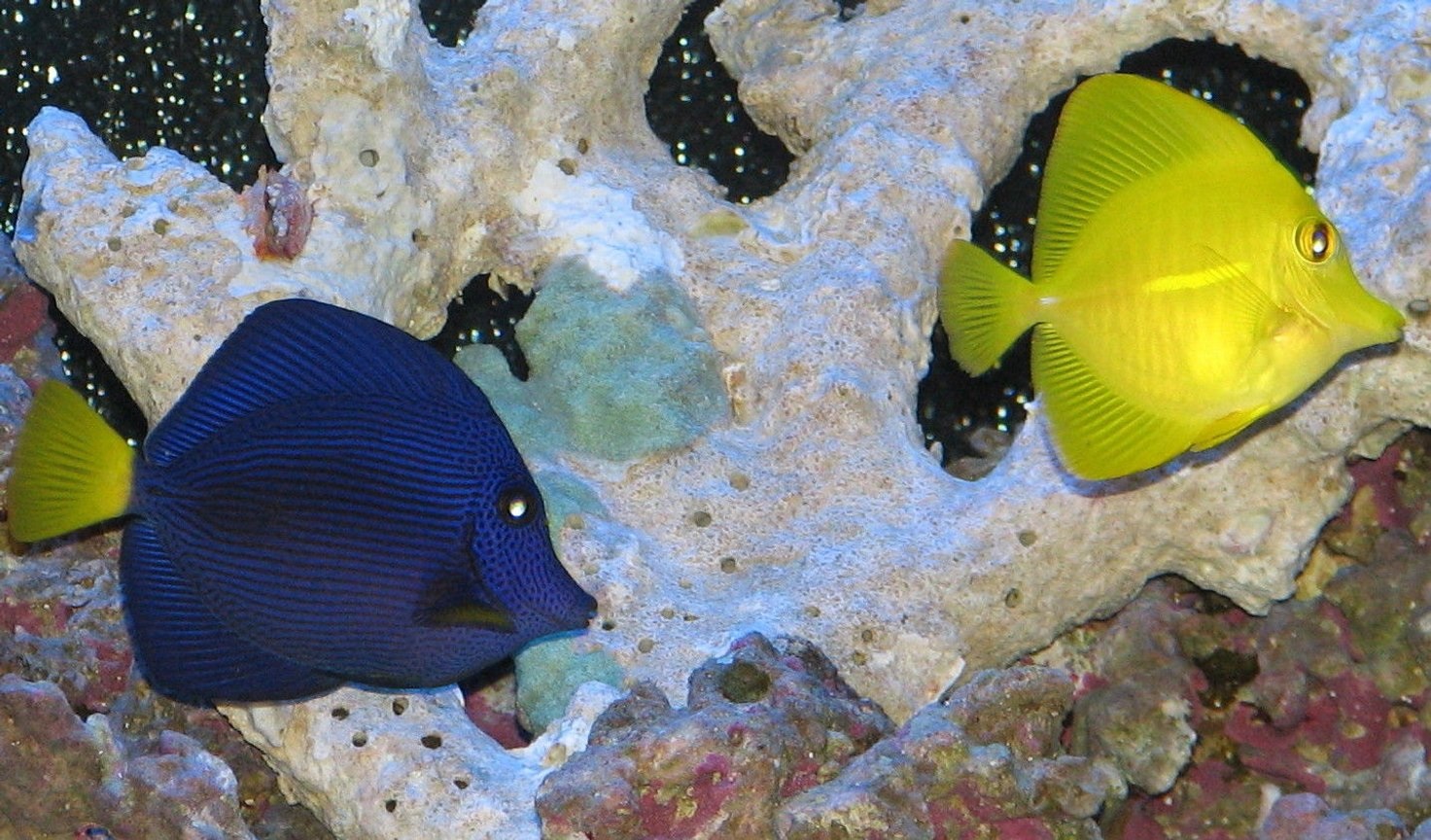
Purple Tang and Yellow Tang swim side by side.
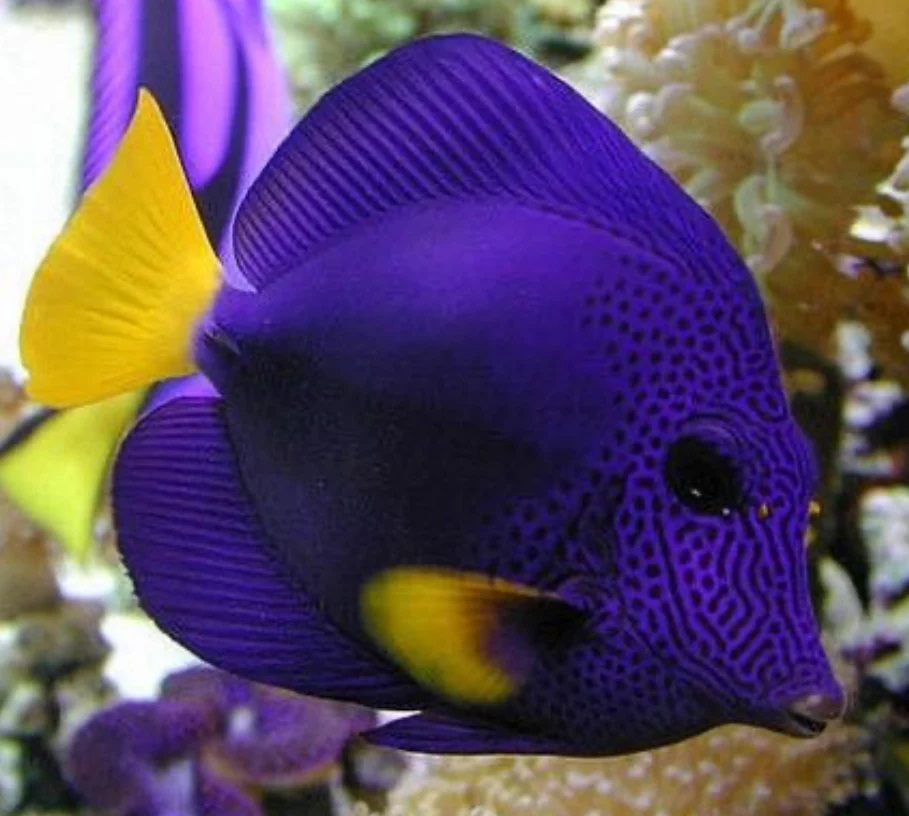
The unique color, spot and stripe pattern of a Purple Tang fish.
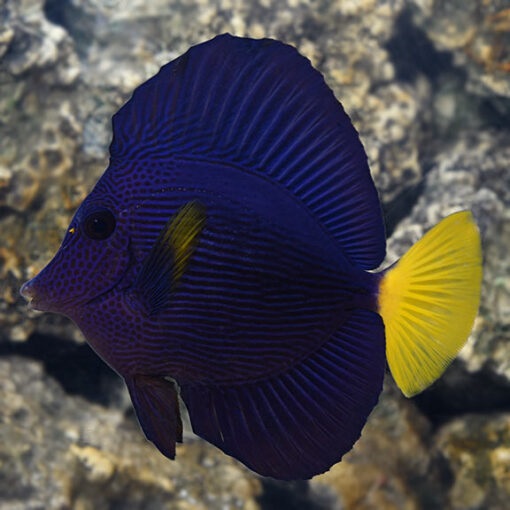
Super cool image of a purple surgeonfish swimming in crystal clear water.
With the information that nicefish.net shares above about Purple Tang , we hope you have a better understanding of the origin, habits and care of this unique and beautiful marine fish. If you have a lot of experience in raising ornamental fish and want your aquarium to have an impressive highlight, choose Purple Tang, we guarantee you will be very satisfied.
Don't forget to visit our Blog section to learn more about other beautiful aquarium fish!
